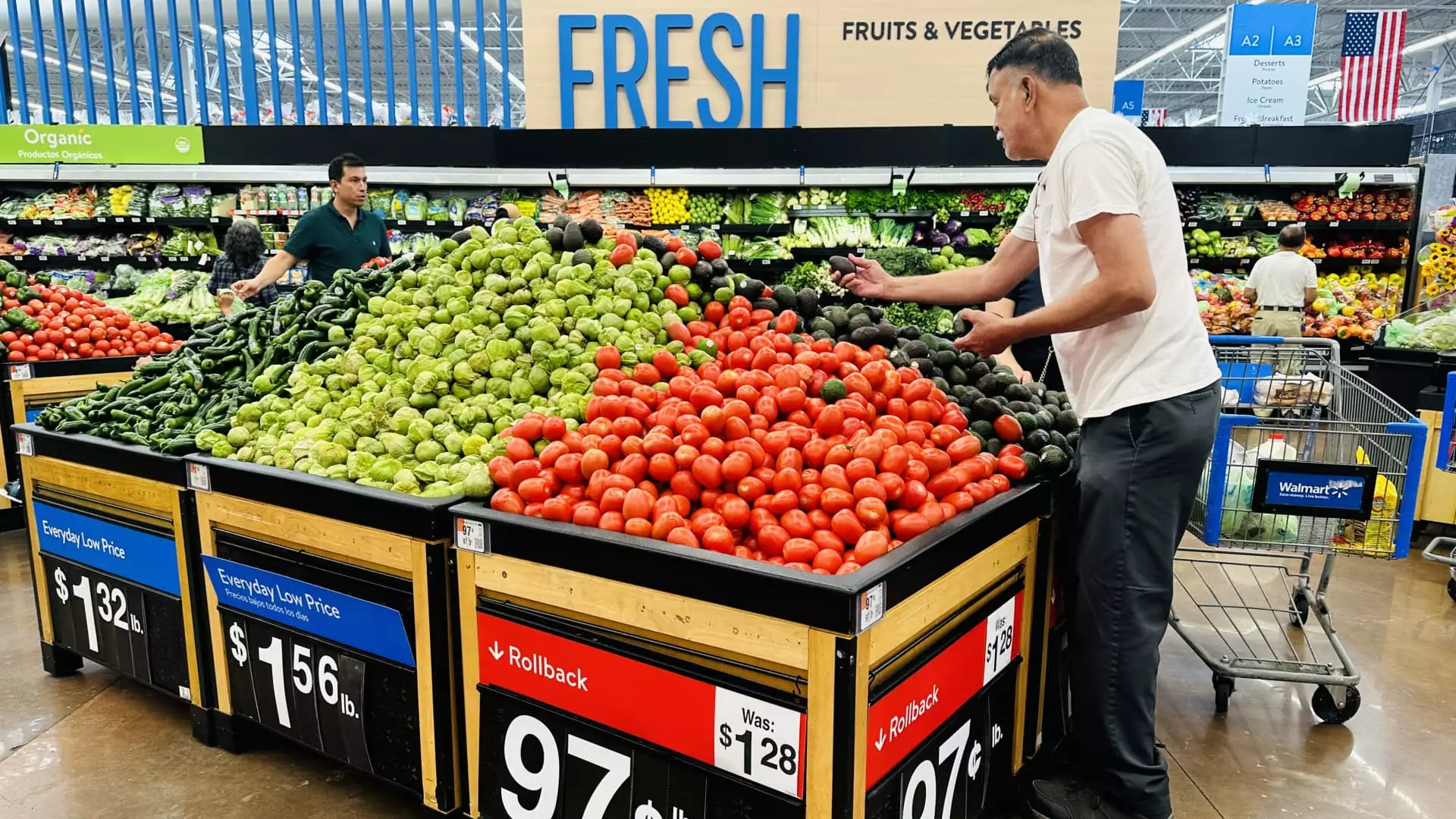In a world marked by economic unpredictability, even the most renowned discount giant, Walmart, finds itself at a crossroads. Recent announcements from their CFO, John David Rainey, reveal an unsettling reality: price increases are on the horizon due to tariffs. As investors and consumers alike hold their breath, it’s important to examine what this means for American shoppers. With prices on the verge of rising, the immediate response to this news can range from alarm to indifference, yet the dynamics behind it paint a much more intricate picture than mere expense hikes.
Walmart, famed for its unwavering commitment to low prices, is now contending with sharp and accelerating cost increases that threaten to alter the shopping landscape. Rainey’s revelations about tariff-induced price hikes come amid economic undertones that imply deeper consequences in the fabric of American retail. When we consider that Walmart sources products from a vast array of countries—from China and Mexico to India and Columbia—we begin to understand the profound impact international trade policies have on American consumers.
Consumer Behavior: The Game of Guessing Prices
The retail environment is a living organism that reacts to impulses, and right now, those impulses are guided by a ticking clock of tariff deadlines. Consumers facing the uncertainty surrounding increased prices tend to shift their buying habits. A peculiar phenomenon occurs: big-ticket items see a surge in purchases as people rush to buy before price increases take effect. However, this urgency can have a chilling effect on spending in discretionary areas.
The conundrum of price inflation is increasingly evident—while consumers are scrambling to buy now, they may become more cautious about spending in other product categories. This strange dichotomy sets the stage for an intriguing landscape of purchasing behavior that can either protect or hinder retailers depending on how they adjust their strategies.
Price Adjustments and Supply Chain Reinventions
Walmart is reportedly poised to absorb some costs to maintain its competitive pricing edge, but Rainey’s admission suggests that certain categories will inevitably see price increases. The company is not simply sitting back and absorbing the fallout; rather, they are taking proactive measures. By diversifying suppliers and reevaluating inventory practices, Walmart exemplifies an agile approach to supply chain management in the face of tariff-related challenges. Transitioning from materials exposed to tariffs, like aluminum, to alternatives like fiberglass will mitigate some cost pressures.
This flexibility is essential not only to secure profit margins but also to uphold the trust consumers place in a brand synonymous with affordability. However, the real question looms: just how much leeway can Walmart afford before it alienates its price-conscious consumers?
Future Implications: The Retail Landscape Reimagined
Despite the challenges ahead, Rainey remains optimistic—a sentiment that surprising aligns suspiciously with the notion that adversities can sometimes present unexpected opportunities. If consumers start flocking to Walmart in search of value during periods of inflated prices, the brand could find itself uniquely positioned to capitalize on the competition’s missteps. For traditional retailers, this is a wake-up call to double down on their value propositions.
Interestingly, Walmart’s continuing pull on market share, despite impending price hikes, suggests a paradox where struggle can breed a competitive edge. As the fiscal horizon looks uncertain, it may reveal not only a struggle for survival but a vibrant battleground for retailers committed to meeting consumer needs amidst adversity.
By leveraging its vast resources and supply chain networks, Walmart holds the potential to navigate these turbulent waters with increasing finesse. As competition forces other brands to raise prices uniformly, Walmart’s strategy to absorb costs and maintain a price advantage could serve as a blueprint for resilience in the ever-evolving world of retail.
In sum, while tariffs appear as a mere burden to the average consumer initially, they might set the stage for a substantial realignment within the marketplace, allowing shoppers an opportunity to reassess value and wield power over pricing dynamics that could shift in their favor.

